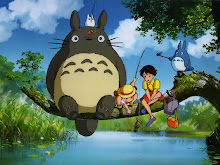To use an oft-mentioned quote, it's not all about size. But yes, size matters.
This environment is filled with the nastiest spells in Magic. The sooner an opponent is dead, the better. That's one less guy to worry about. And the most reliable way to kill someone is still to turn creatures sideways and send them into the red zone. Big creatures. Gigantic creatures. The kind that make Constructed beaters like Blastoderm or a fully-realized Wild Nacatl look shrimpy.
However, not all good Type 4 creatures are huge. A lot of the most useful ones are below average size, or downright tiny.
Creatures in Type 4 are generally classified into two categories: beaters or utility. It's a rare creature that can fit both classifications, and those are often some of the most coveted creatures for the format.
Beaters
What makes a good Type 4 beater?
Here's where the size comes in. What counts as "average" in Type 4? In general, if a creature's Power + Toughness is greater than or equal to 12, that makes it average. Anything larger is better, anything smaller puts in doubt its status as a beater. In general, a 5/5 or smaller creature had better be doing something else. If its purpose is to smash your opponent into powder, then 5/5 is too small.
There are a few exceptions of course. A 4/3 with double strike is decent, if not spectacular. A slightly below average-sized creature can still be a frightening beater given the right set of abilities:
Also, as with Constructed Magic, creatures with evasive abilities are better than normal. You might also classify a creature as having no evasion, "standard" evasion, or true evasion.
Standard evasive abilities include, from best to worst, fear/intimidate, flying, and trample. They're better than having no evasion at all, but flying and trample are also weaker in this format than in most other formats. Flying is weaker because it's the most common form of evasion in T4 and so many beaters fly. Two 6+ power fliers facing off in the sky is a normal occurrence. Trample is similarly weaker because with few exceptions, you won't be getting in for much. Your 8/5 trampler doesn't seem as good when they block with a 6/6.
True evasion in T4 represents creatures who simply can't be blocked as an inherent part of their design. Considering that blocking is often fatal in this format, this is an important thing.
If your group follows the right house rule (like we do), the more common form of unblockability is landwalk, because every player is considered to have one or infinite numbers of every basic land in play (depending on the individual rule). This makes any kind of landwalk function. The huge islandwalkers in particular are of interest.
Beaters that can do more than smash face are also more valuable. Ideally, a beater must be able to inflict its combat damage and still be able to use whatever abilities it has. One of the best abilities is lifelink, or something similar. Gaining life in multiplayer while inflicting damage is very useful (also termed "lifegain on a stick").
Utility
The utility creature can be small in size, because its primary function are its abilities, rather than its ability to smash in the red zone. The most valuable of these are the ones who have activated abilities which can be used multiple times, eg. Don't require the creature to tap.
Of those, among the most coveted for stacks are known as the "Masticores," because they're able to wipe the board of all other creatures, and can keep the board clear until someone destroys them.
There are many creatures with such abilities, but many of them are broken and unfair in an environment with infinite mana. Oona can remove every colored card from all opponents' libraries and create a huge horde of faeries besides, Selesnya Guildmage can creature infinite saprolings and pump all of your creatures to infinite power and toughness, and Reckless Embermage can kill the entire table.
Such creatures can be legal provided there's sufficient errata or house rules, such as setting the value for X, or limiting certain abilities to a particular number of activations per turn. Even without such creatures though, there are many powerful abilities that can still be considered fair despite infinite applications.
The weakest kind of abilities are enters-the-battlefield trigger abilities, because normally, you only get to use those once. Imagine them as being sorceries with creatures attached. So if you put in a utility creature that has those abilities, make sure they do something really useful or really versatile. Being a little sizable helps too.
Combination
As mentioned earlier, creatures which have utility abilities and classify as beaters are among the best creatures in T4. Be sure to grab those whenever you see them, because they quickly become staples that you'll never want to get rid of (at least, not unless they print something strictly better.



No comments:
Post a Comment